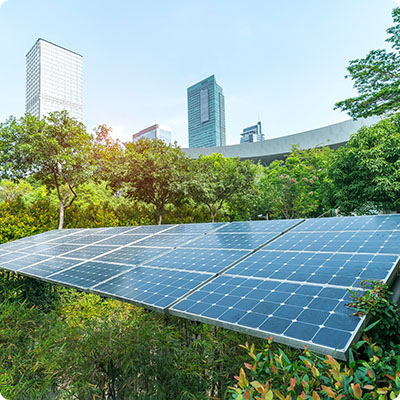Saint Petersburg, the cradle of Russian ballet
It was in St. Petersburg that the country's first ballet school opened its doors in 1738. Today it is attached to the Mariinsky Opera and Ballet Theatre and is the oldest ballet academy in Russia. The French master Jean-Baptiste Landé was invited to direct it from the outset and this collaboration gave rise to a true tradition of French influence in the art of Russian ballet - until the Revolution, French choreographers directed the shows and troupes of Russian theatres.
The artistic symbiosis between the composer Piotr Tchaikovsky and the French choreographer Marius Petipa undoubtedly marks the apogee of Franco-Russian collaboration in ballet. It is to this tandem that we owe The Nutcracker, Swan Lake, Sleeping Beauty
, as well as the extraordinary level reached by Russian ballet and the formation of its classical image. Petipa and Tchaikovsky are buried side by side at the necropolis of the Masters of Arts of the Holy Trinity Alexander Nevsky Lavra in St. Petersburg. After the revolution, the change of political regime paradoxically did not signal the death warrant for the ballet, despite its clear association with imperial power. Although the Imperial Mariinsky Ballet was renamed Kirov from 1922 to 1992 (in honour of the popular politburo member who was assassinated in 1934 on Stalin's orders at the Smolny Institute), it was nonetheless pampered by the Bolshevik state. In both St. Petersburg and Moscow, two ballet schools were formed to conquer the world, and the Party leaders made every effort to make Soviet ballet their calling card - Soviet artists spent half the year touring abroad, promoting their country. A situation that gave them ideas, and the flight of Russian dancers on tour resonated as one of the most scathing slaps in the face of the Soviet leadership in the second half of the 20th century. This was particularly the case for Rudolf Nureyev and Mikhail Baryshnikov, stars of the Mariinsky Theatre, who found refuge abroad and continued their brilliant careers in Paris and New York respectively.Valery Gergiev, a Maestro of inexhaustible energy
The man who is considered by many to be the greatest conductor of our time devoted his life to the art of ballet and opera and to the Mariinsky. Of Ossetian origin, he won the 1976 Karajan International Conducting Competition in Berlin at the age of 23. No one yet knows that he will become the Russian Karajan. The Caucasian trained at the St. Petersburg Conservatory joined the Kirov in 1978 as a conductor. This was the beginning of what will be the commitment of his life, never denied for more than 40 years: to make the Mariinsky a beacon of Russian and world culture. His lively and passionate orchestral conducting is singular. Most of the time without a baton and with her hands alone, she passes through direct communication and contact with the musicians. Although not affiliated with the PC (Communist Party), his talent and the support of the members of the Mariinsky make him the artistic director of the Mariinsky in 1988. After the fall of the USSR, in the heart of the dark years, he became Mariinsky's general manager in 1996. The theatre was desperately short of money and the company was experiencing a real exodus of its best artists, who were lured away by the large Western companies. Gergiev refuses to accept golden bridges and promises to make the Mariinsky the best orchestra and ballet of its time.
Back to the future
It is constantly integrating and training many young talents, launching major international tours and sponsorship operations. In 1998 he founded the Academy of Young Singers, which serves as a post-training centre for the most beautiful voices from conservatories throughout Russia. He returned to the sources of Russian music by unearthing the original libretti of the operas (the texts and dialogues sung having been modified during the Bolshevik era) at the same time as he internationalized the orchestra's repertoire. An orchestra whose sound he sculpts, with all his artistic and technical know-how, to make it the most beautiful. As a lover of acoustics, he dreams of perfect, ultra-modern and never-seen-before halls. The fire in the building where the costumes were stored gave him the opportunity to create a new stage. The number of seats in this cello-shaped instrument room will be limited to 1,100, which is the gauge of optimal acoustics according to the skilful calculations of the Japanese Nakata Acoustics, commissioned by Gergiev. Inaugurated in 2006, it has become the Mariinsky's main stage and rivals the most modern halls in the world.
But Gergiev does not stop there and inaugurates in 2013, on his 60th birthday, the Mariinsky-2. This immense and futuristic complex with a surface area of nearly 80,000 square meters wants to redefine the standards of opera in the 21st century. A 2,500-seat opera house with 8 stage changing rooms, orchestra pits, a state-of-the-art auditorium, a glass-clad amphitheatre on the roof for the Nuits Blanches Stars Festival... The old guard cries out in scandal at this audacious architecture, but Gergiev recalls the controversies sparked by the Pyramid of the Louvre or the Eiffel Tower. The wager is successful, all eyes are once again turned towards the Mariinsky and every night people come from all over the world to live a unique musical and choreographic experience.To Know
: run by culture and ballet enthusiasts, the French tour agency IdeaGuide offers an exclusive behind-the-scenes tour of the Mariinsky Theatre thanks to a special arrangement with the management of the prestigious theatre. It is necessary to contact them in advance to organize it. For more information, please visit their website, which can be consulted in French. www.athema-association.com : ATHEMA (Association Française des Amis du Théâtre Mariinsky), based in Paris, brings together lovers of opera, ballet and classical music. In additionto being a mine of information about the prestigious institution, it organizes events related to its programming all year round, as well as a trip for its members on the occasion of the Festival des Étoiles des Nuits Blanches, punctuated by original encounters with the artists.
www.actes-sud.fr/node/62758: Meeting with Valery Gergiev, interviews with Bertrand Dermoncourt (Actes Sud, 2018). This reference book is the fruit of 10 years of interviews with the charismatic and visionary conductor. He confides in it with his usual personality, frankness and erudition. Fascinating.







